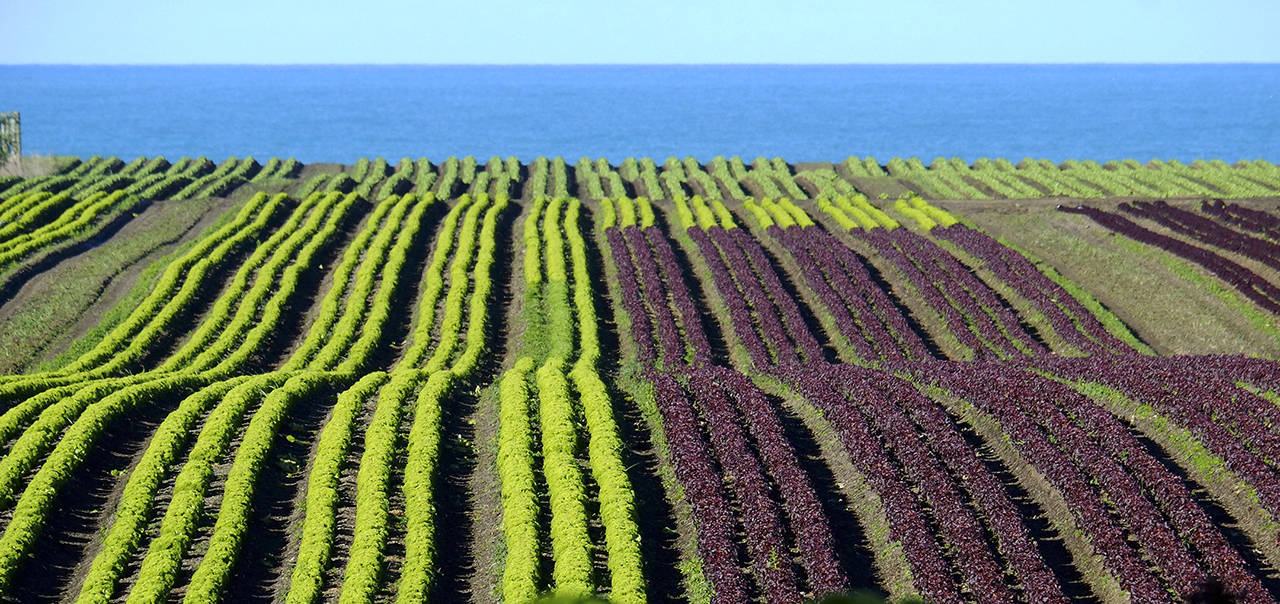By Mary Shane
WSU Master Gardener
I’ve always looked forward to selecting lettuce varieties for the spring garden. So many choices! Originally, I thought I would describe some of the varieties I really like for this article. Quickly, though, I discovered a whole lot about the history of lettuce that goes beyond the many varieties.
The first lettuce grown was cultivated around 2680 BC by the Egyptians, evidenced by its hieroglyphic representation on the walls of Egyptian tombs. It was developed from bitter and prickly lettuces grown in the wild, Lactuca serriola (known sometimes as prickly lettuce or milk thistle) and Lactuca virosa. These species are forebears of what we today call romaine or Cos lettuce. Both were grown for their oil, which came from seeds that were harvested and pressed to be used for cooking, medication, and even mummification. L. serriola was a sacred plant of the Egyptian reproduction god Min, because of the plant’s phallic structure and its aphrodisiac and opiate qualities.
Lettuce was grown by the Greeks and Romans as a descendent of the prickly lettuces, but cultivated to be an edible plant. It was the Romans who gave lettuce romaine or Cos lettuce its name. The botanical name (Lactuca sativa) derives from what the Romans called the plant: “lactuca,” meaning “milky.” It is a reference to milky substances found in the plant’s cut stems—actually latex. Sativa means “sown,” a sign that this is a cultivated plant, as opposed to the wild and bitter species. Use of raw lettuce as a salad green was called herba salata (“salted greens”) in Latin. From that allegedly comes the word “salad.”
Today there are four different types of lettuce:
• Romaine (Cos)
• Butterhead (Bibb or butter)
• Crisphead or iceberg
• Looseleaf
I’ve wondered why romaine lettuce is also called Cos lettuce. It is because in Europe this variety was originally found on the Greek island of Cos (Kos), which was a center of lettuce farming during the Byzantine period.
Crisphead or “head” lettuce kept its name in the United States until the 1920s. It was then when lettuce could be shipped from California to the East Coast on rail cars filled with ice to keep it crisp. The rail cars, when opened after their long journey across the country, looked like they will full of icebergs — hence the term “iceberg lettuce.”
Christopher Columbus brought lettuce to the New World in 1493 on his second trip to the New World. His second voyage included a fleet of 19 ships and over 1,200 men. One of them, a “gentleman volunteer,” wrote afterward to a Genoese friend that many seeds, including lettuce seeds, that had been taken on this trip did very well in the Dominican Republic.
Thomas Jefferson planted at least 17 varieties of lettuce in his Monticello garden. He once authored a monthly gardening calendar that appeared in the magazine American Farmer. He instructed that a “thimble spool” of lettuce seed should be planted each Monday from March 1 to Sept. 1. Michelle Obama’s White House chef paid homage to Jefferson’s lettuce by including two varieties that are descendants of the plants Jefferson grew in his kitchen garden. Both “Tennis-Ball” and “Brown Dutch” lettuce seeds can be purchased at the Monticello website.
Red romaine lettuce was grown and harvested on the International Space Station beginning in August 2015. “Outredgeous”was the variety selected to send, because it grows quickly and contains anthocyanins — the flavonoids that give lettuce their red, blue and purple colors. In humans, these compounds help reduce the risk of cancer and cardiovascular disease.
Sources for lettuce seed abound. I generally like to select varieties from seed companies within our same general temperature range. Territorial Seeds and Johnny’s Select Seeds are two options, and there are other smaller companies to consider in Washington and Oregon. Uprising Seeds in Bellingham, Nichols Garden Nursery and Victory Seed Co. are three from which I have bought lettuce seeds.
Mary Shane, a Master Gardener since 1998, lives in the Val Vista area west of Montesano.


